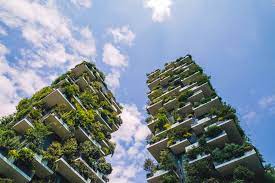Green building practices have become increasingly important in today’s world, as concerns about environmental sustainability and energy efficiency continue to grow. Innovations in this field are constantly evolving, aiming to create buildings that are not only environmentally friendly but also healthier and more cost-effective. Let’s explore some of the latest innovations in green building practices:
Sustainable Materials and Construction Techniques
- Advanced Composites: Composite materials made from recycled fibers and bio-based resins are becoming popular for their durability and sustainability.
- 3D Printing: Additive manufacturing technologies allow for the creation of complex shapes using sustainable materials, reducing waste and construction time.
- Mass Timber Construction: Engineered wood products like cross-laminated timber (CLT) offer a renewable alternative to traditional construction materials, with the added benefit of carbon sequestration.
Energy-Efficient Design and Systems
- Passive House Design: Passive design principles maximize energy efficiency by optimizing building orientation, insulation, and natural ventilation.
- Smart HVAC Systems: Intelligent heating, ventilation, and air conditioning systems use sensors and algorithms to optimize energy usage based on occupancy and external conditions.
- Renewable Energy Integration: Solar panels, wind turbines, and geothermal systems are being increasingly integrated into building designs to generate clean, renewable energy on-site.
Smart Building Technologies
- Building Automation Systems: Automated systems monitor and control building operations, including lighting, HVAC, and security, to optimize energy usage and occupant comfort.
- IoT Sensors: Internet of Things (IoT) sensors collect real-time data on energy consumption, indoor air quality, and occupancy, enabling predictive maintenance and energy optimization.
- Building Energy Management Systems (BEMS): BEMS platforms analyze energy data to identify inefficiencies and recommend energy-saving strategies for building owners and managers.
Water Conservation and Management
- Greywater Recycling: Greywater recycling systems capture and treat wastewater from sinks and showers for reuse in irrigation or toilet flushing, reducing water demand and sewage load.
- Rainwater Harvesting: Rainwater collection systems capture and store rainwater for non-potable uses such as landscaping and toilet flushing, reducing reliance on municipal water sources.
- Low-Flow Fixtures: Water-efficient fixtures like low-flow toilets and faucets help reduce water consumption without sacrificing performance or comfort.
Biophilic Design and Green Spaces
- Living Walls: Vertical gardens incorporate live plants into building facades, providing natural insulation, air purification, and aesthetic appeal.
- Green Roofs: Rooftop gardens and green roofs reduce heat island effect, improve air quality, and provide habitat for wildlife while insulating buildings and reducing stormwater runoff.
- Daylighting Strategies: Maximizing natural light through skylights, clerestory windows, and light shelves enhances occupant well-being, productivity, and connection to the outdoors.
Net-Zero and Positive Energy Buildings
- Net-Zero Energy Buildings (NZEBs): NZEBs produce as much energy as they consume over the course of a year, typically through a combination of energy-efficient design and on-site renewable energy generation.
- Positive Energy Buildings (PEBs): PEBs generate more energy than they consume, feeding excess energy back into the grid and offsetting energy usage elsewhere.
Circular Economy Principles
- Material Reuse and Recycling: Designing buildings for disassembly and using recycled materials promotes a circular economy by reducing waste and conserving resources.
- Product Life Extension: Repair, refurbishment, and adaptive reuse of building components extend their lifespan and minimize the need for new materials.
These innovations represent just a glimpse into the exciting developments happening in green building practices. As technology advances and awareness of environmental issues grows, we can expect even more innovative solutions to emerge, driving the transformation towards a more sustainable built environment.
